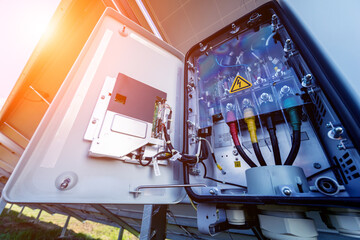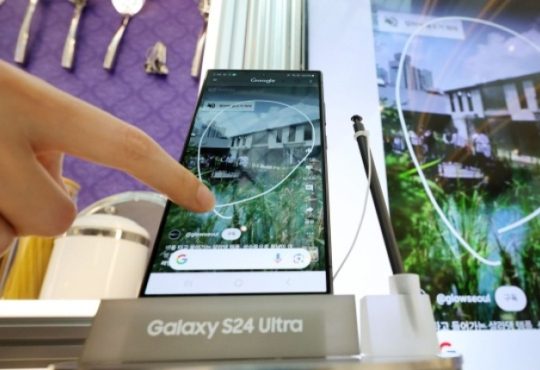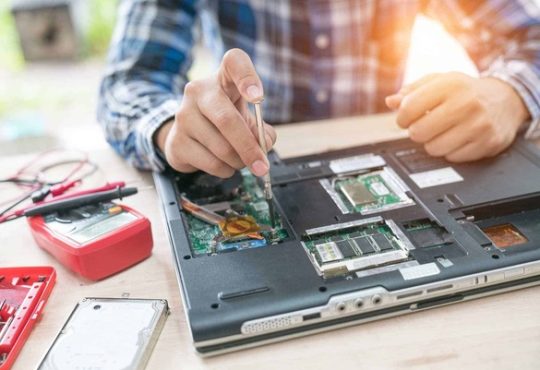
Due to the increasing automation of equipment, it is now necessary to protect computer data processing and industrial processes from possible power losses by installing a static uninterruptible power supply (UPS), frequently referred to as an inverter.
Most electronic equipment is sensitive to voltage disturbances, whether it is a computer or any digitally controlled equipment with a microprocessor.
This type of equipment requires a UPS to ensure a stable and reliable power supply and thus avoid data loss, equipment deterioration, or simply a loss of control of industrial processes which can be costly and often dangerous.
Principle of operation of an inverter
An Inverter or UPS has two main functions to ensure the protection of equipment:
- Regulation of the AC output in order to obtain a stable sinusoidal voltage without distortion, at the required frequency.
- Compensation for network absences by the energy stored in a set of batteries.
The input of a UPS connects to the AC grid. The alternating voltage is converted into direct voltage by a system called a rectifier. This direct voltage supplies the UPS stage and charges the battery. In the event of a main power failure, the battery takes over and supplies power to the UPS stage. The latter converts the direct voltage back into alternating voltage and transmits the energy to the load or receiver.
Some UPS systems include a secondary line, called a static bypass, which allows energy to be diverted to the load, in the event of failure of one of the Rectifier or UPS components, or simply in the event of scheduled maintenance on there if.
Static By-Pass
The particularity of the static By-Pass lies in the fact that in the event of a sudden current inrush (peak current, current impact, or even short-circuit), the inverter transfers the load to the By-Pass which then supplies the energy required, in particular in the event of a short-circuit on the downstream network.
An important factor can therefore be seen here which must be determined with respect to the receivers located downstream of the inverter, which is the crest factor. The inverter or UPS must be powerful enough to supply, at any time, the energy linked to the peak currents without switching to its By-Pass because, in this situation, it is clear that in the event of an interruption or micro-cut of the primary voltage, the load will no longer be supplied.
Another important point to consider is the choice of batteries associated with the UPS. The autonomy of the system is directly linked to the technology and the capacity of the batteries (expressed in Ah). Choosing a high battery capacity like a sprinter battery, therefore, makes it possible to obtain significant autonomy, bearing in mind that manufacturers generally communicate the autonomy at ¾ of charge.
Technically, having a high capacity (in Ah) also makes it possible to increase the value of the short-circuit current. This is even in the event of a fault downstream of the inverter. This point is very important because it is difficult to make standard protections react with low Isc values. We will see later in this series of articles devoted to inverters, that the value of the short-circuit current is different depending on the technology used.
The different types of inverters
In the range of inverters available on the market, several technologies can be distinguished.
The first is called Off-Line. In this, the equipment is supplied normally by the sector and the inverter takes over only in the event of a cut, or too great a drop in the mains voltage. This switch to batteries takes a certain time (a few milliseconds) which is not too annoying for computers with switching power supplies, but it can cause problems for more sensitive equipment. Off-Line inverters are the most economical, but their use should be reserved for workstations, or for individual use.
In the second so-called Line Interactive technology, the principle is the same. With the exception of the input voltage which is controlled and filtered by the inverter before being delivered to the equipment. The current supplied is therefore of better quality, but the voltage variations are not well regulated. As a result, this type of UPS should not be used on business-critical servers.
Finally, in On-Line Double conversion technology, the current is continuously delivered by the inverter. This guarantees constant voltage and the absence of interference. The device to be protected is therefore completely disconnected from the mains. Tests show that these are the inverters On-Line which have the most stable output voltage and the best noise immunity. They are very often used on all strategic servers. Other technologies are also offered by manufacturers. However, they are mostly derived from these three basic models. Visit also: APC SMT-UPS
Criteria to consider for inverters
Before getting to the heart of the matter concerning the various criteria to be defined in order to choose your inverter, it is important to consider the following points:
On what type of network will the inverter or UPS be installed?
As a general rule, the distribution network, whether it is in high voltage (20KV) or in low voltage (400Vac) is composed of a three or four-phase structure. It, therefore, has 3 phases and a neutral referenced to the earth.
- At the domestic level, the network is generally single-phase but also sometimes four-phase. On this type of installation, it is rare to see high power consumption, so it is quite possible to imagine using inverters or UPS in a single-phase structure even if they are physically connected between phase and neutral.
- At the industrial level and for four-phase networks, it is more likely to use Inverters or UPS in three-phase or even four-phase structures so as to limit the phase currents for high powers. The cost of single-phase inverters must be taken into consideration with respect to three-phase or four-phase inverters.
A second point to consider is the form factor
Inverters can have a variety of form factors, which fall into two main categories: modular rack mounting or ” tower ” or cabinet mounting. Larger inverters are generally tower type and often impose load balancing devices on the ground. For businesses with smaller needs, the decision between rack-mount or tower-cabinet UPS depends largely on the design of the installation site.
Some manufacturers use rack-mounted UPSs in order to centralize as much material as possible in their racks. Others prefer to maximize the space available on the rack for the servers by using UPS in tower-cabinet format. From a technical and financial point of view, an approach can be made by considering the level of operation required (possibility of integrating or extracting various “hot” modules on the UPS in rack format. Hence the need to have a high short-circuit current for reasons of discrimination. It will generally be supplied by inverters in tower-cabinet format).
Another point to consider is the availability of sources
Industrial users have a wide choice of solutions, technologies, and services. This allows them to improve the reliability of their electrical protection solution.
These include:
Redundant architectures:
Deploying UPSs in redundant groups improves availability. It ensures that critical loads remain protected, even in the event of failure of one or more inverters. There are three main types of redundant architecture for inverters:
Zone:
One or more inverters provide dedicated protection for part of the data center.
Thus, if an inverter breaks down during a power cut, the consequences are limited to the area protected by this device.
Series:
Several inverters are connected end to end; thus, if one of them fails, the others can automatically compensate. This solution is not always very practical in the event of curative maintenance on one of the inverters.
Parallel:
Parallel architectures use several independent inverters connected in parallel to improve redundancy. In the event of a complete UPS failure, other systems can keep protected IT equipment operational.
Technical criteria to consider
As we have seen previously, the first criterion to consider is its capacity to provide the necessary power. This power is intended for a set of receivers (for example computers) in the event of a power cut. In general, manufacturers express the maximum power of their products in KVA. We, therefore, realize that the active power (in kW) supplied by the UPS to the receivers can be more or less important depending on the cosϕ imposed by the receivers.
The second criterion is the autonomy of the system. This is linked to the capacity of the batteries and to the efficiency of the inverter itself. It also depends on the power demanded during the cut. Although not proportional (or linear), one can easily understand that the more the power (in KW) called by the receivers increases, the less the autonomy will be important.
Other elements are also to be taken into account such as the recharging time of the batteries. If the power cuts are numerous, the charging time should be as short as possible. Next, it is necessary to check whether or not it is possible to hot-swap the batteries. Their lifespan is not infinite, it is practical to be able to carry out exchanges without disconnecting or even shutting down the inverter, therefore without turning off the equipment that connects to it. Finally, it is important to know if it is possible to add additional batteries to increase the autonomy.
As we have seen above, it is also necessary to consider the quality of the voltage delivered. It is the harmonic distortion that measures it. Its value must be as low as possible and in principle less than 5% or even 3%




